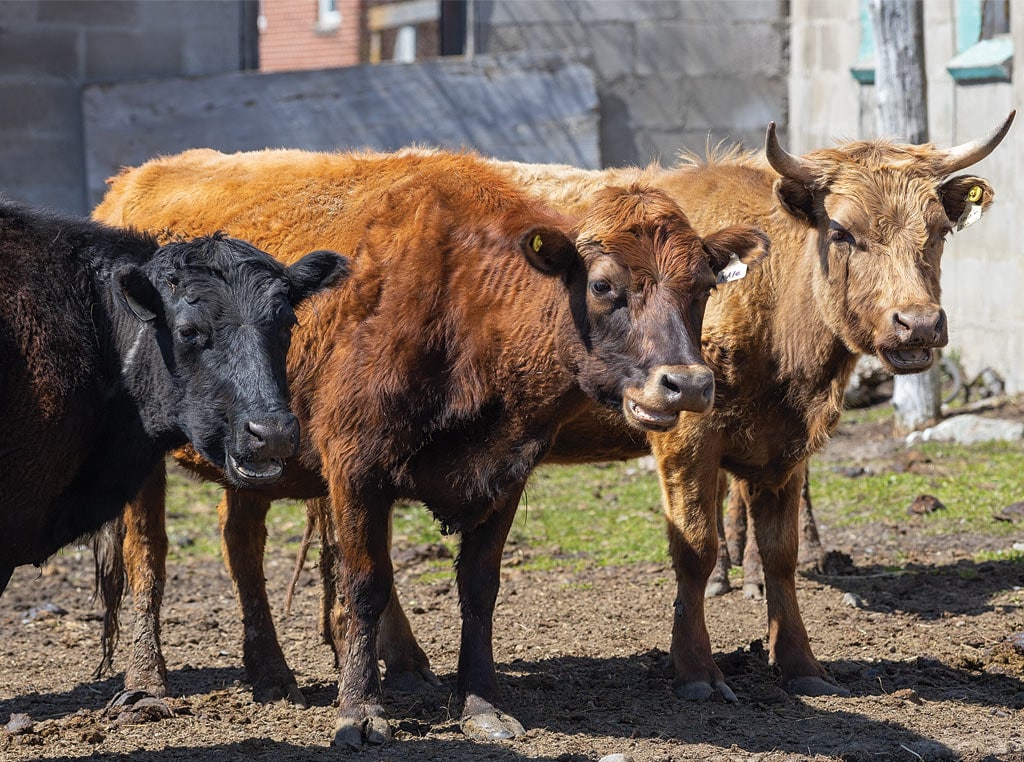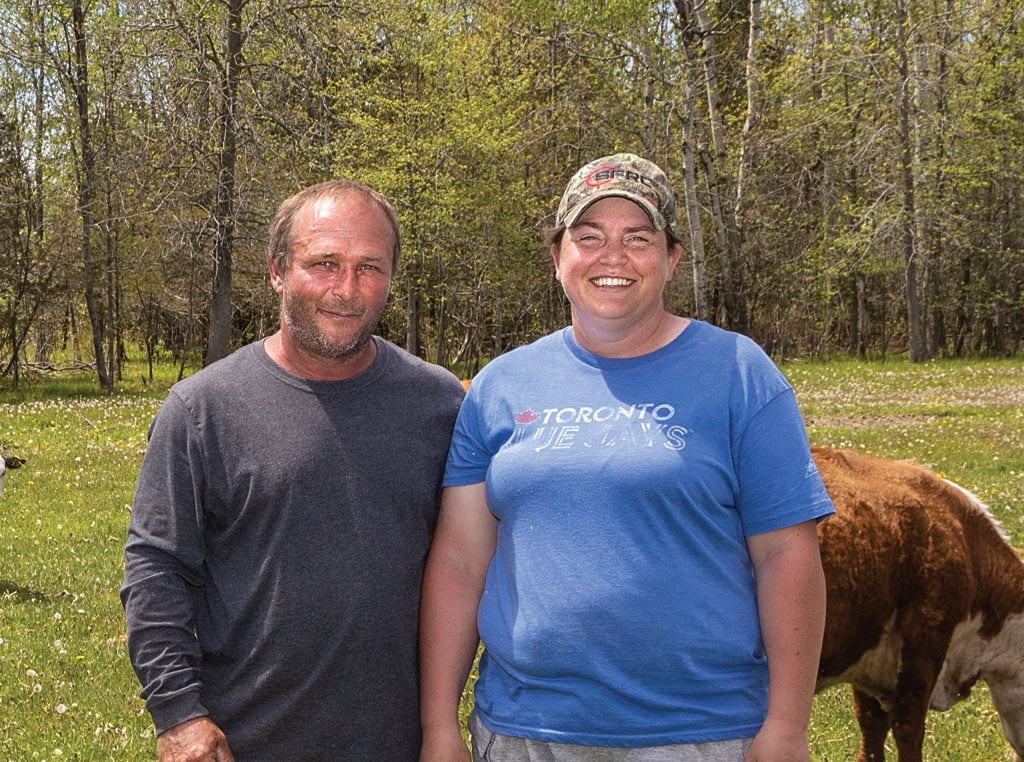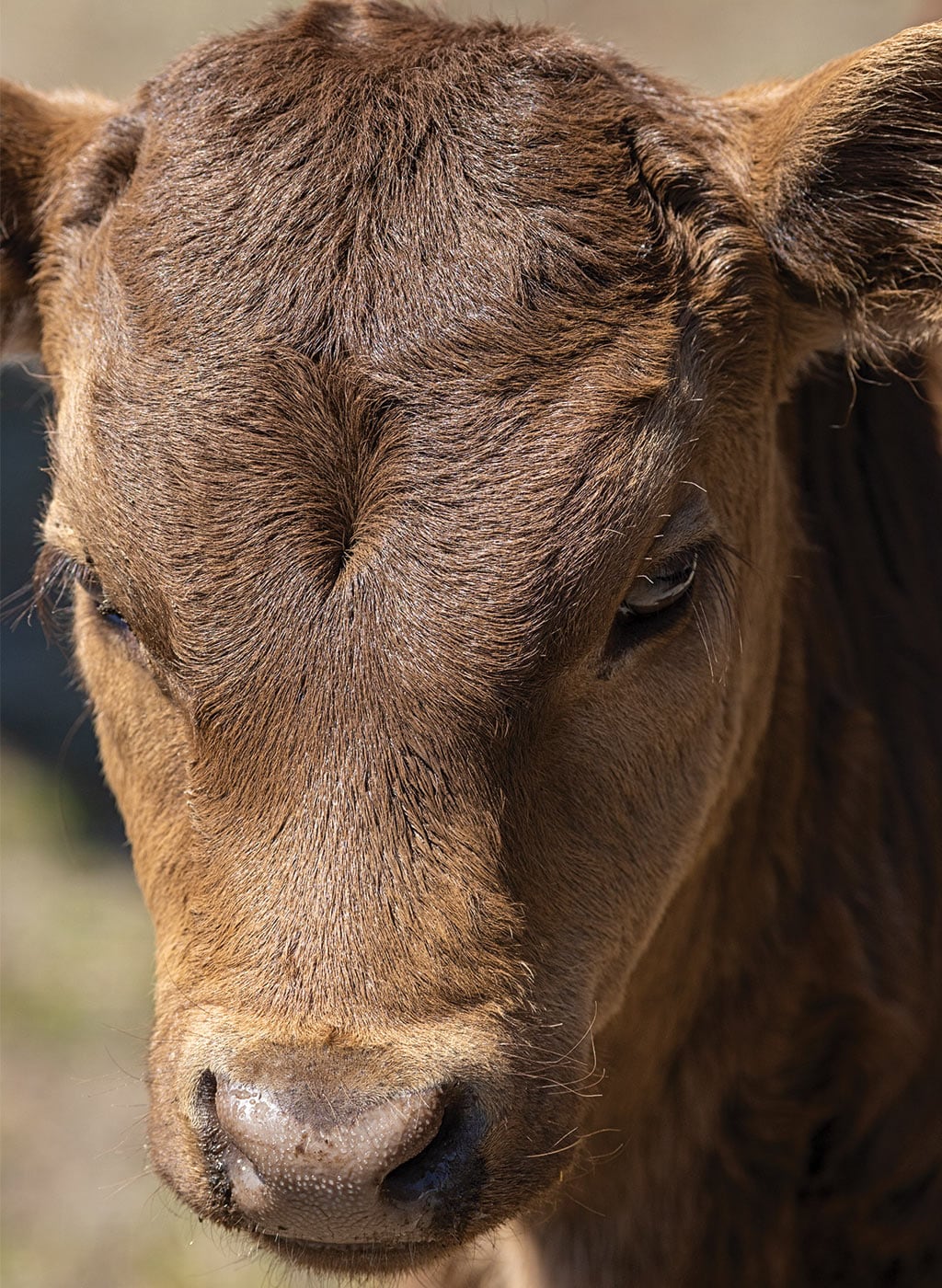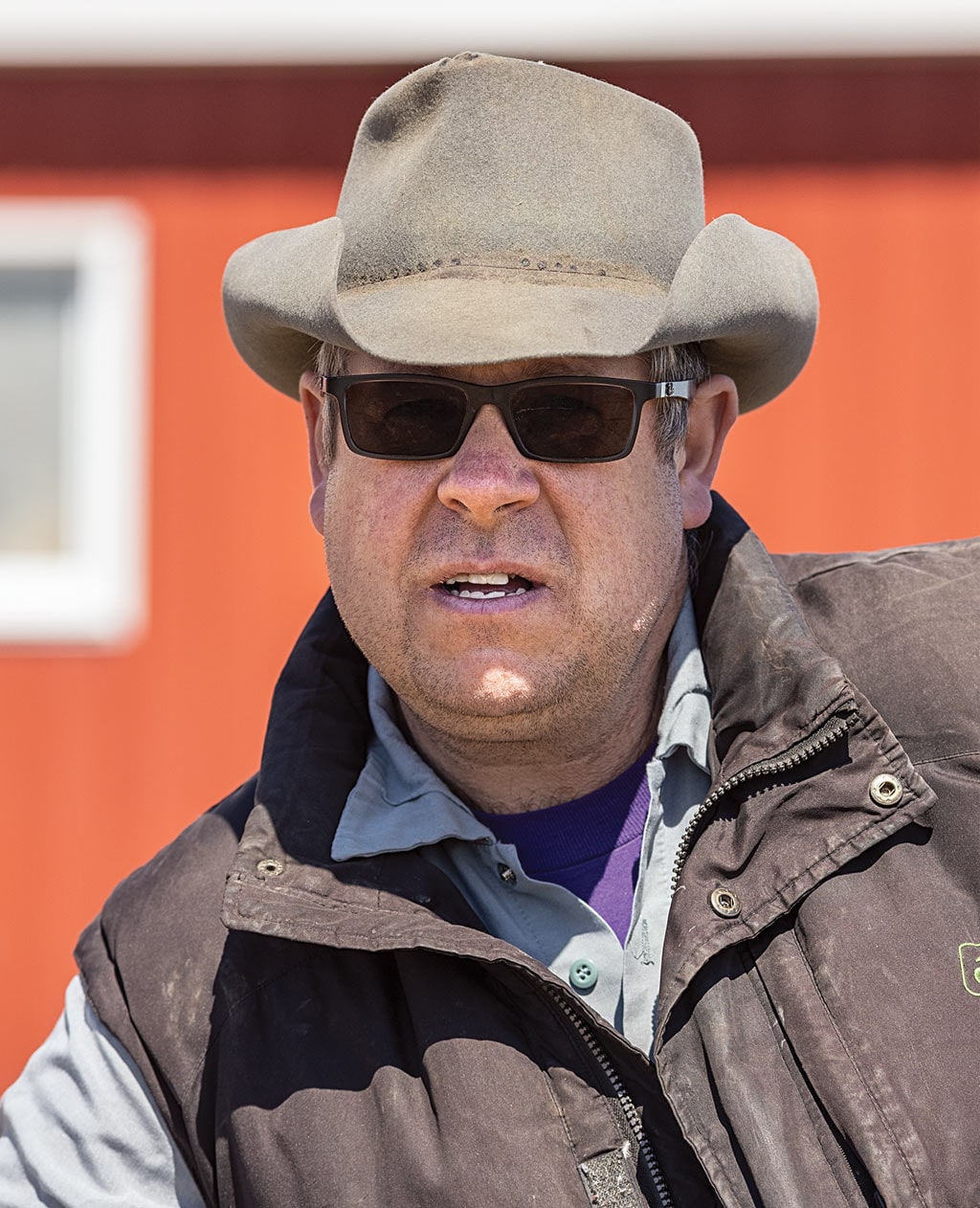Agriculture, Education March 01, 2022
Mini Moos
Good things come in small packages.
Teacup pigs and miniature horses have company. Increasing numbers of people are also raising mini cows on their mini farms. But while tiny versions of other traditional farmyard animals are kept as pets on acreages across Canada and the United States, miniature cattle can provide your family with beef and milk too.
Selectively smaller. Miniature cows are identical to regular cattle in every way, they’ve just been selectively bred to be one-third to one-half the size of standard cattle. The largest are only 48 inches tall at the hip while the smallest are 36 inches or less. Calves are about the size of mid-size dogs. Each animal only requires one-half acre of space, so it’s possible to maintain a small herd on all but the smallest acreages.
Good things come in small packages as far as Ian Payne is concerned. Payne, past President of the Canadian Dexter Association, has been raising purebred Dexter cattle near Chesterville, Ontario since 2003. He’s convinced the rare, multi-purpose miniature breed, developed in 18th century Ireland, is the ideal livestock to raise on a small acreage.
“Sheep are born to die, pigs and goats get into everything,” Payne says. “Dexters are bred to survive. They’re very hardy, rugged animals that can turn even garbage forage into meat. In their early days in Ireland, they were expected to be able to thrive on whatever moss and short grasses they could find to graze on.”
Dexters were initially bred to be the poor man’s cow. They’re a multi-purpose breed that have been reliable sources of beef and A2 milk for decades, Payne explains. Some patient owners even train them to pull small carts too.
Payne’s Dexters range from 42 to 48 inches high, about kitchen counter height, and weigh about 2/3 of a Jersey cow. Their smaller size makes them easier to handle and they are known for their longevity. He’s had cows still calving when they were 18 years old and has rarely ever had calving issues.
Dexters can be either black, red or dun (brown). They are usually horned but there are naturally polled lines too.
The breed had almost disappeared a decade ago because commercial beef producers wanted larger animals, but they’ve been enjoying a renaissance in recent years thanks to acreage owners. Numbers have grown enough that Dexters are no longer classified as a rare breed.
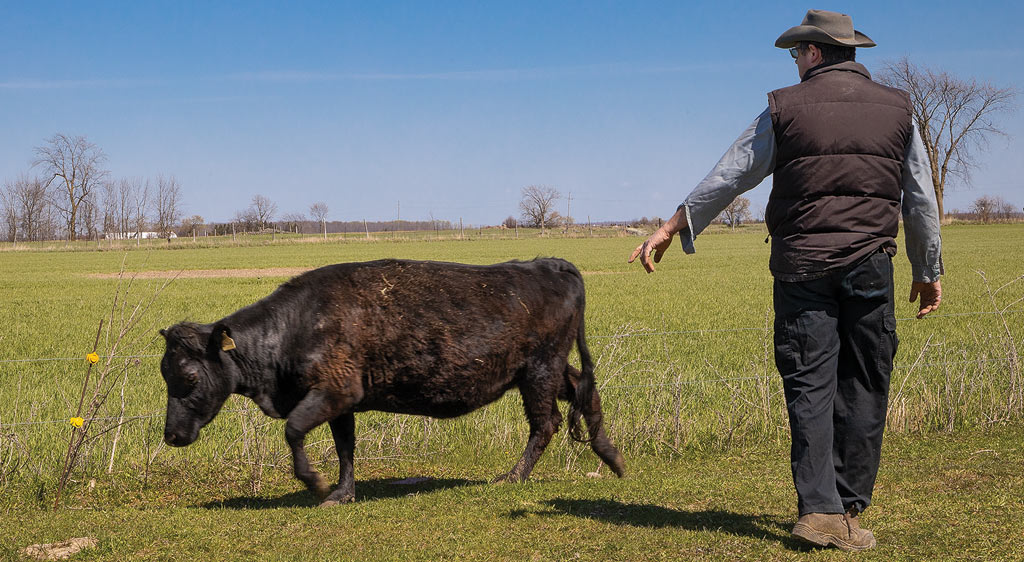
Miniature cattle, like Ian Payne’s Dexters, are just like regular ones but were selectively bred to be a fraction of the size.
Many mini breeds. While Dexters are the smallest of the European breeds, they aren’t the only miniatures available. The International Miniature Cattle Breeder’s Society and Registry (www.minicattle.com) lists 26 breeds, but Dexters, Zebus, Lowlines (Miniature Angus), Miniature Herefords, Miniature Jerseys, Miniature Highlands, and Miniature Belted Galloways are by far the most popular.
Chad and Sarah Harvey of Odessa, Ontario, opted for miniature cattle after raising full-sized ones because Chad wanted to try his hand at butchering a carcass by himself. After researching different breeds, they settled on Miniature Herefords. Their full-grown cows are about 42 inches tall, about 30% to 50% the size of traditional Herefords. Except for their size, they have all the same attributes as standard Herefords. They’re very hardy animals.
“Miniature Herefords are a lot easier to handle than full-size animals,” Sarah Harvey says. “We found that if we avoid chasing them around the pasture when they are little, they stay a lot calmer when they are older.
“They are also better suited to our pasture,” Sarah says. “It can only support so many animals, but we can feed two or three of our minis for every full-size one we used to raise. We also get to see twice as many babies every year and that’s always fun.”
Full-size Hereford cows are normally bred when they are yearlings and produce their first calves when they are two years old. However, the Harveys don’t breed their purebred cows until they are a year older which means they have their first calves around year three. They’ve now added a Lowline (Miniature Angus) bull that will produce smaller calves so they’ll be able to breed their cows at a younger age. The Harveys sell Miniature Hereford breeding stock but their focus is direct selling grass fed freezer beef. An average carcass yields about 300 pounds of hanging beef, Sarah says. Typically, that’s about what a family of four can consume within the recommended freezer shelf life.
“One big advantage to raising miniature cattle is they produce steaks that will fit on a plate,” Harvey says. “Our customers give us compliments about how well marbled our beef is all the time,” Sarah says.
“Some say they usually add oil when they’re frying it because the meat is lean.”
Miniature breeds typically cost more than a standard size animal. But Payne says he believes the benefits for acreage owners far outweigh disadvantages. ‡
Above. Chad and Sarah Harvey chose Miniature Herefords because they were easier to handle and better suited their pasture. Ian Payne initialy chose Dexters because he was interested in old rare breeds. The International Miniature Cattle Breeder’s Society and Registry lists 26 different breeds.
Read More
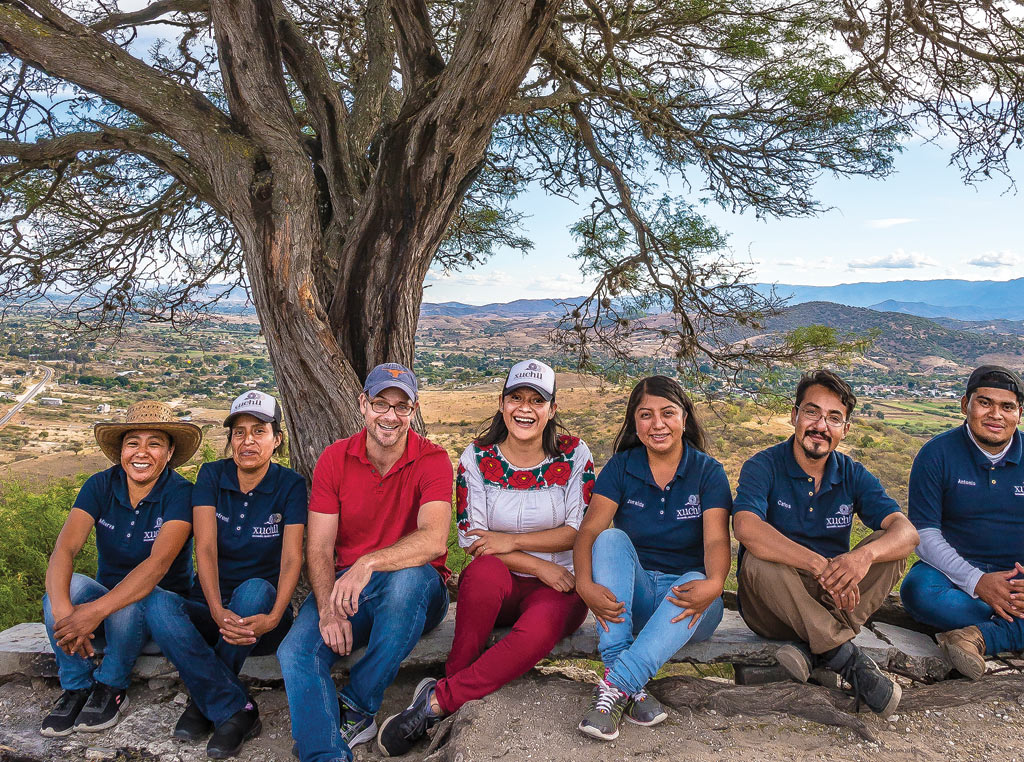
AGRICULTURE, RURAL LIVING
Secrets of Mesquite
A rural Mexico start-up turns a nuisance tree into food.
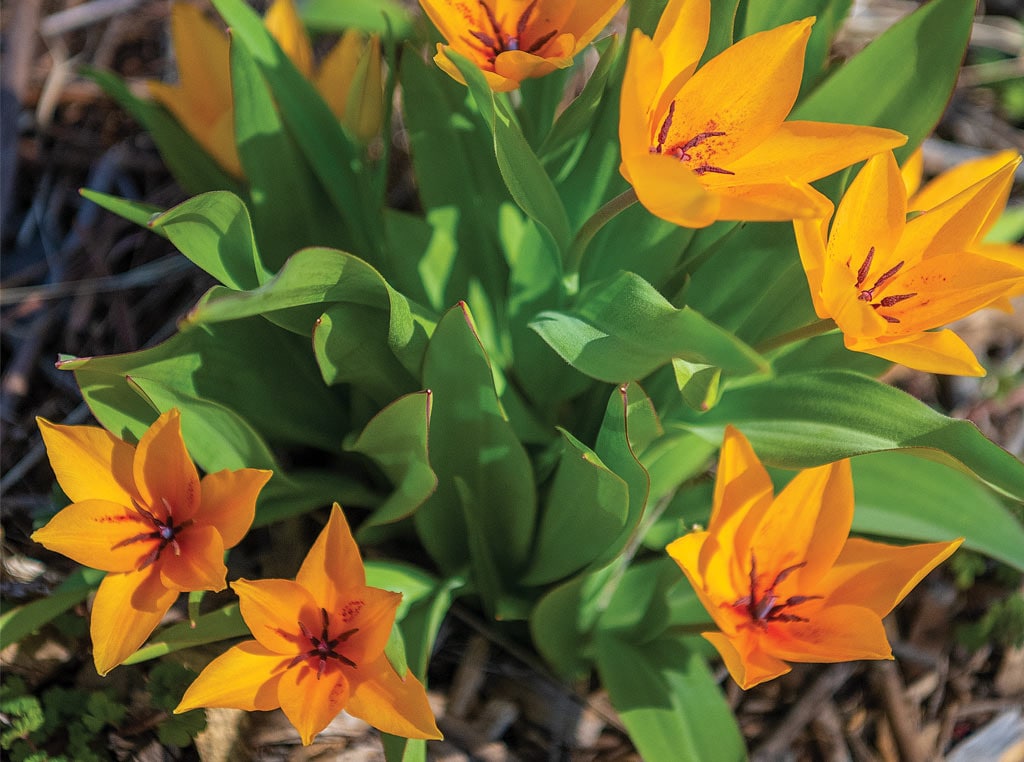
RURAL LIVING, SPECIALTY/NICHE
Think Lasagna for Spring Flowers
Give spring flowers staying power in the landscape by planting bulbs in layers.

